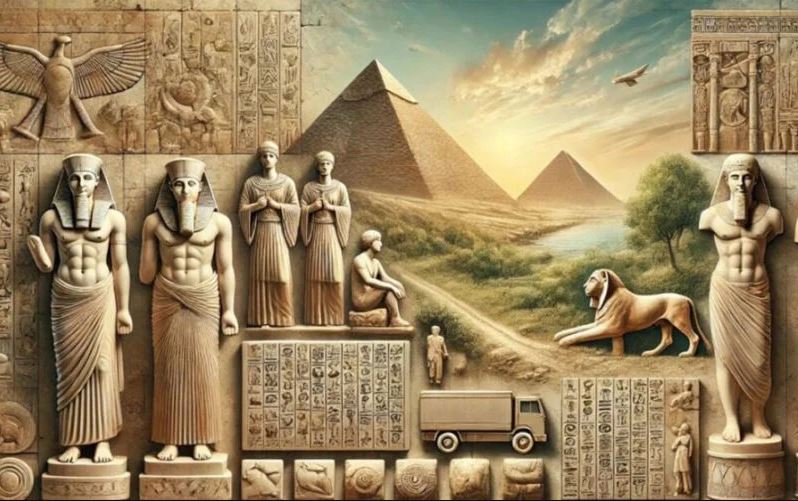Ancient artz offers a captivating glimpse into the cultural and historical narratives of early civilizations. By examining various art forms, we can appreciate the diverse expressions and technological advancements of ancient societies.
Mesopotamian Art
Mesopotamia, often termed the Cradle of Civilization, was home to the Sumerians, Akkadians, Babylonians, and Assyrians. Their art primarily consisted of intricate carvings, cylinder seals, and monumental architecture. The use of relief sculptures to depict mythological and historical scenes was prevalent, showcasing their advanced techniques and storytelling prowess.
Egyptian Art
Ancient Artz Egyptian art is renowned for its symbolic representation and adherence to strict conventions. From the grandeur of the pyramids to detailed hieroglyphics, Egyptian art was deeply intertwined with their religious beliefs and afterlife concepts. Statues, paintings, and carvings often depicted gods, pharaohs, and daily life, emphasizing order and balance.
Greek Art
Greek art evolved through several periods, including the Archaic, Classical, and Hellenistic eras. It is celebrated for introducing naturalism and the study of human anatomy in sculpture. Pottery adorned with mythological narratives and the construction of architectural marvels like the Parthenon reflect the Greeks’ pursuit of beauty and perfection.
Roman Art
Building upon Greek foundations, Roman art incorporated realism and a focus on individualism. Mosaics, frescoes, and portrait sculptures were prevalent, often serving decorative purposes in public and private spaces. The Romans also excelled in engineering, evident in structures like the Colosseum and aqueducts.
Chinese Art
Ancient Artz Chinese art spans a vast timeline, with notable contributions during the Shang, Zhou, Qin, and Han dynasties. Bronze casting, jade carving, and calligraphy were prominent art forms. The Terracotta Army, commissioned by Emperor Qin Shi Huang, exemplifies the sophistication and scale of Chinese artistry.
Indian Art
Indian art is characterized by its intricate sculptures, temple architecture, and vibrant paintings. The Indus Valley Civilization produced remarkable terracotta figurines and seals. Later periods saw the emergence of Buddhist stupas and Hindu temples adorned with elaborate carvings depicting deities and mythological tales.
Mesoamerican Art
Civilizations like the Maya, Aztec, and Olmec contributed significantly to Mesoamerican art. They created colossal stone heads, intricate calendars, and ceremonial masks. Their art was deeply connected to religious rituals and astronomical observations.
African Art
Africa’s rich artistic heritage includes rock paintings, pottery, and sculptures. The Nok culture of Nigeria is notable for its terracotta figures dating back to 1000 BC. These artworks often held spiritual significance and were integral to community rituals.
Key Features of Ancient Artz
| Civilization | Art Forms | Key Characteristics |
|---|---|---|
| Mesopotamian | Relief sculptures, seals | Mythological scenes, monumental architecture |
| Egyptian | Pyramids, hieroglyphics | Symbolism, order, religious themes |
| Greek | Pottery, sculptures | Naturalism, human anatomy, beauty |
| Roman | Mosaics, frescoes | Realism, individualism, engineering feats |
| Chinese | Calligraphy, jade carvings | Sophistication, scale, cultural significance |
| Indian | Sculptures, temple art | Mythological depictions, intricate carvings |
| Mesoamerican | Stone heads, masks | Religious rituals, astronomical connections |
| African | Terracotta, rock art | Spiritual significance, community rituals |
Conclusion
Exploring ancient artz provides invaluable insights into the lives, beliefs, and achievements of early civilizations. Each region’s unique contributions have left a lasting legacy, inspiring artists and historians for generations. By studying these masterpieces, we not only celebrate their artistic brilliance but also deepen our understanding of humanity’s shared cultural heritage.




